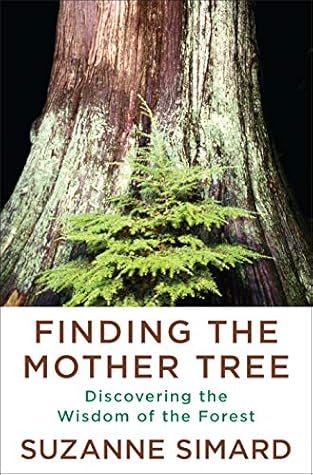More on this book
Community
Kindle Notes & Highlights
But nothing lives on our planet without death and decay. From this springs new life, and from this birth will come new death. This spiral of living taught me to become a sower of seeds too, a planter of seedlings, a keeper of saplings, a part of the cycle. The forest itself is part of much larger cycles, the building of soil and migration of species and circulation of oceans. The source of clean air and pure water and good food. There is a necessary wisdom in the give-and-take of nature—its quiet agreements and search for balance.
One of the first clues came while I was tapping into the messages that the trees were relaying back and forth through a cryptic underground fungal network. When I followed the clandestine path of the conversations, I learned that this network is pervasive through the entire forest floor, connecting all the trees in a constellation of tree hubs and fungal links.
He was never wealthy, but he lived in rich peacefulness with the forest, taking only what he needed, leaving gaps so the trees could come back. I was fortunate he’d shown me this. How to protect the forest while it provided us with wood to build our homes, fibers to make our paper, and medicines to cure our ailments. I wanted to be a new breed of silviculturist who honored this responsibility.
Holy cats,
“You look like you’ll tell me some secrets,” I murmured as I tugged at a fir with a stout stem.
Plants are attuned to one another’s strengths and weaknesses, elegantly giving and taking to attain exquisite balance. A balance that can also be achieved in the simple beauty of a garden. In the complex society of ants. There’s grace in complexity, in actions cohering, in sum totals. We can find this in ourselves, in what we do alone, but also in what we enact together. Our own roots and systems interlace and tangle, grow into and away from one another and back again in a million subtle moments.
“Do you think it’s important that we’re seeing that Mother Trees are also bigger when they’re next to their kin?” Amanda asked. “It makes sense if they’re passing signals back and forth.” Of course it did. Being connected and communicative affects the parents as much as the kids.
Diversity matters. And everything in the universe is connected—between the forests and prairies, the land and the water, the sky and the soil, the spirits and the living, the people and all other creatures.
But I had learned so much more by listening instead of imposing my will and demanding answers.
Dying enabled the living; the aged fueled their young.
Each bear preying on the spawning salmon transported some 150 fish per day into the forest, where the roots of the trees foraged for the decaying protein and nutrients, the salmon flesh providing more than three-quarters of the tree’s nitrogen needs. The nitrogen in tree rings derived from salmon was distinguishable from the soil’s nitrogen because fish at sea get enriched with the heavy isotope nitrogen-15, which serves as a natural tracer of salmon abundance in the wood. Scientists could use the year-by-year variation in tree-ring nitrogen to find correlations between salmon populations and
...more
“We’d like to design our city in a way that mimics the patterns of mycorrhizal connection,” wrote a city planner from Vancouver. The concept of the Mother Tree and her connections to those around her had even made it into Hollywood, as a central concept to the tree in the film Avatar. How the film resonated with people reminded me how naturally crucial it is for people to connect to mothers, fathers, children, family—our own and the families of others—and to trees and animals and all of the creatures of nature, as one.
They collected the fish trapped at low tide, releasing the biggest egg-bearing females to continue up the river to spawn. They smoked, dried, or cooked the fish, buried the guts in the forest floor, and returned the bones to the waters to nourish the ecosystem. This practice enhanced the salmon populations and the productivity of the forests, rivers, and estuaries. The forests, rich with salmon, returned the favor by shading the rivers, shedding nutrients into the waters, and providing habitat for the bears, wolves, and eagles.
They perceive, relate, and communicate; they exercise various behaviors. They cooperate, make decisions, learn, and remember—qualities we normally ascribe to sentience, wisdom, intelligence. By noting how trees, animals, and even fungi—any and all nonhuman species—have this agency, we can acknowledge that they deserve as much regard as we accord ourselves. We can continue pushing our earth out of balance, with greenhouse gases accelerating each year, or we can regain balance by acknowledging that if we harm one species, one forest, one lake, this ripples through the entire complex web.
...more
It’s up to each and every one of us. Connect with plants you can call your own. If you’re in a city, set a pot on your balcony. If you have a yard, start a garden or join a community plot. Here’s a simple and profound action you can take right now: Go find a tree—your tree. Imagine linking into her network, connecting to other trees nearby. Open your senses. If you want to do more, I invite you into the heart of the Mother Tree Project to learn techniques and solutions that will protect and enhance biodiversity, carbon storage, and myriad ecological goods and services that underpin our
...more


